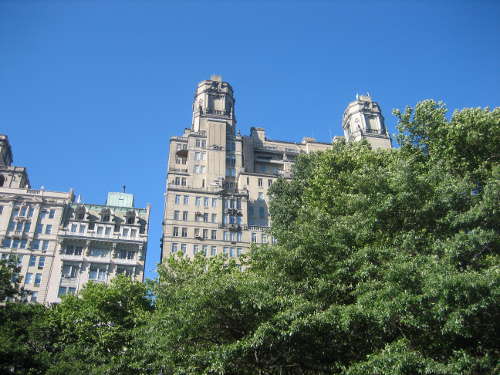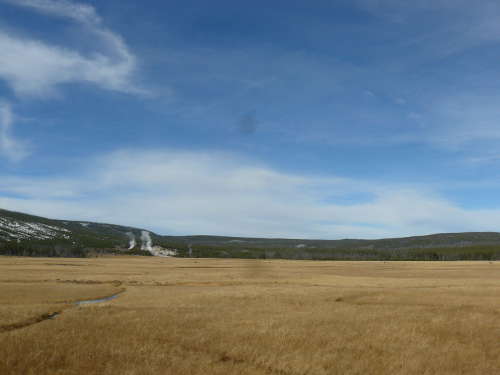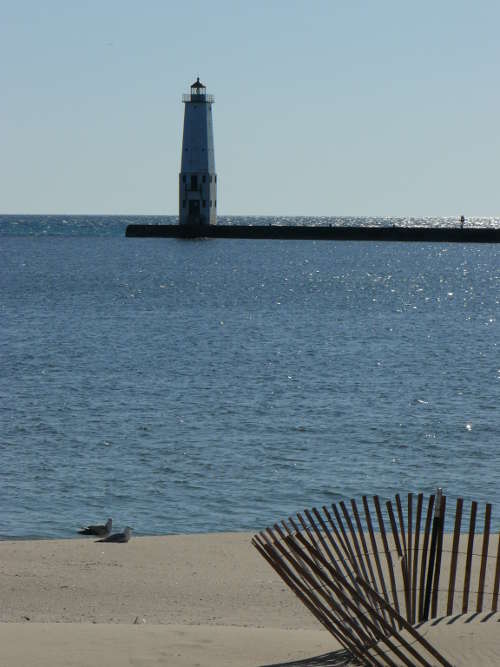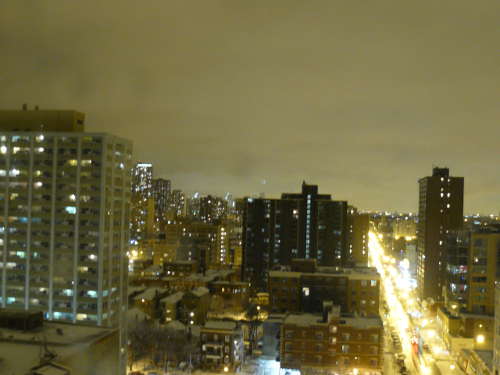 Location Taken: New York City, New York (I don’t have any pictures of Pittsburgh, so I just went with what I had)
Location Taken: New York City, New York (I don’t have any pictures of Pittsburgh, so I just went with what I had)
Time Taken: June 2007
My Dad picked up Elfhome, a book by Wen Spencer, last weekend. It’s the third in the series, so well, I decided to start from the first book and work my way up.
So today I found my copy of Tinker and started reading it.
And I was immediately struck by the strength of the very first sentence of the book.
It goes: “The wargs chased the elf over Pittsburgh Scrap and Salvage’s tall chain-link fence shortly after the hyper-phase gate powered down.”
Now, it does require knowing a few terms before you fully understand the nuances of the sentence. Elves, I’d hope you know. They’re a common race in many fantastical tales, both in the High Elf variant found in Lord of the Rings and the small house-elf of the Santa tales. This book primarily pulls from the High Elf trope. That means overly prissy extraordinarily beautiful people with pointed ears, astounding magical abilities, extremely long lifespans, and a connection to nature. There’s also “warg”, which is a large wolf-like beast that’s usually associated with enemies. They come from Norse myths originally, but Tolkien used them in Lord of the Rings as mounts for the orcish enemies the good guys had to face. They usually carry all the negative stereotypes about wolves and few of the many positives that real wolves bring to counteract the negatives.
In case you hadn’t realized, Lord of the Rings is kinda a big thing for the Fantasy genre. It codified a LOT of the tropes commonly used today.
On the other side of things, well, Pittsburgh is a city in Pennsylvania. It was one of the strongest members of the Steel Belt of industrial cities taking iron from the northern great lakes region and coal from the Appalachians and working them together to create large quantities of steel and the manufactured goods you can make with it. Unfortunately, the mid 1900’s brought a shift in the economy (and an increasing difficulty in getting to good coal and iron veins, since the area was already highly picked over) that made it no longer viable for these cities to continue doing what they were doing, and the Steel Belt turned into the Rust Belt. A whole slew of Great Lakes to Mid-Atlantic cities lost the factories and smelters that made them great cities in the first place. Some, like Detroit, never really recovered, while others, like New York City, reworked themselves and are greater than ever. Pittsburgh is somewhere in the middle, doing just fine but still looking back at its glory days with a lot of nostalgia. It’s still known as Steel City, and that’s also the reason the local football team is called the Steelers.
“Scrap and Salvage”, on the other hand, sure sounds like a junkyard. And it is, as the next few paragraphs make quite clear. Combined with the fact that it’s in Pittsburgh, you’re supposed to picture a solidly middle-class region with strong ties to manufacturing and pride in metal. This gives a slightly different spin on the idea of the junkyard, elevating it up a social class or two from the idea of the dirty, junk-ridden heap of rusting metal the standard trope conveys.
Finally, there’s the hyper-phase gate. That’s solidly Science Fiction jargon. The “hyper” is usually used for science that excites something (I mean that in the scientific sense of excites, of making it more active), while “phase” is usually used for different states of being, like the three standard phases of matter being liquid, gas, and solid. “Gate” is used for a device to pass from one place to another, like a gate in a fence lets you into a house from the street. Put them together, and you’ve got a device that excites something to allow you to pass from one state of being to another. Think Stargate for an easy example.
So this brings us to the fun bit of the sentence. Here we’ve got three rather different worlds coming together. There’s the Fantasy of the elves, the Science Fiction of the gate, and the Down-to-Earth aspects of being in a junkyard in Pittsburgh.
These, as you may have realized, do not normally go together.
Plus there’s the inherent conflict of the fact that this Down-to-Earth location is being quite literally invaded by a battle in progress between the elf and the wargs, adding a sense of action to a sentence that’s primarily for setting-establishing.
Add all this up together, and well, there’s about four or five mysteries just in that sentence. Why are the wargs chasing the elf? Why are there elves in Pittsburgh? Why a junkyard, since it’s by far not the typical setting for Fantasy books? What’s a hyper-phase gate got to do with any of this? And why is there a major combination of Fantasy, Science-Fiction and Modern day, quite unlike just about anything else you’ve ever read that stays within their nice little genre borders?
Which makes this a rather powerful opening sentence when you think about it. The goal of the first few pages of a book, and especially the first sentence, is to draw in the reader. And nothing gets a reader as interested as a whole slew of mysteries and questions they come up with on their own that they know will probably get answered if they just keep reading. And then, well, the characterization and plot will have gotten going and they might as well just keep on with it and then they’re 93 pages into the book and realizing that their neck is stiff from sitting in one spot for so long.
 Location Taken: Yellowstone National Park
Location Taken: Yellowstone National Park



